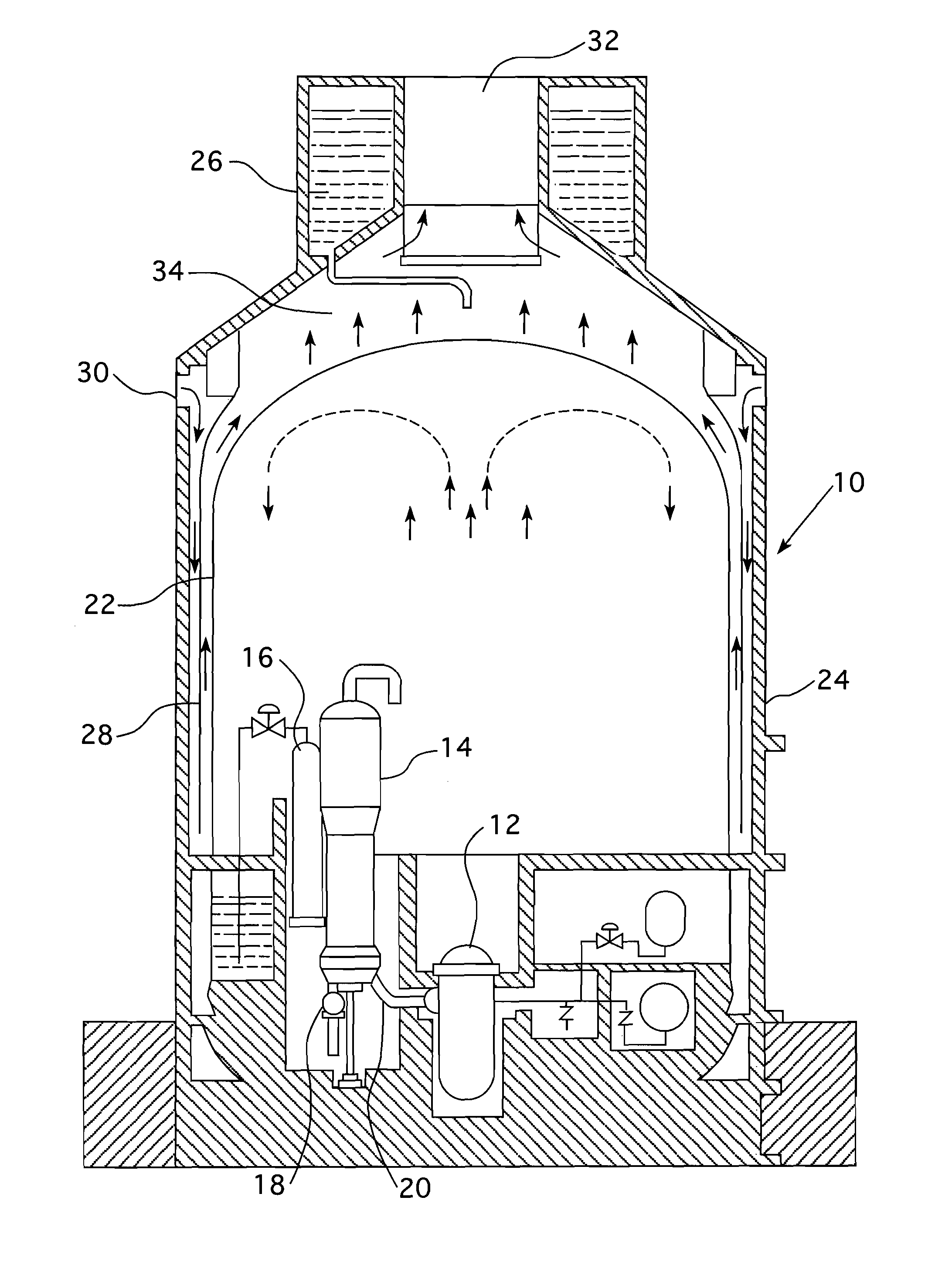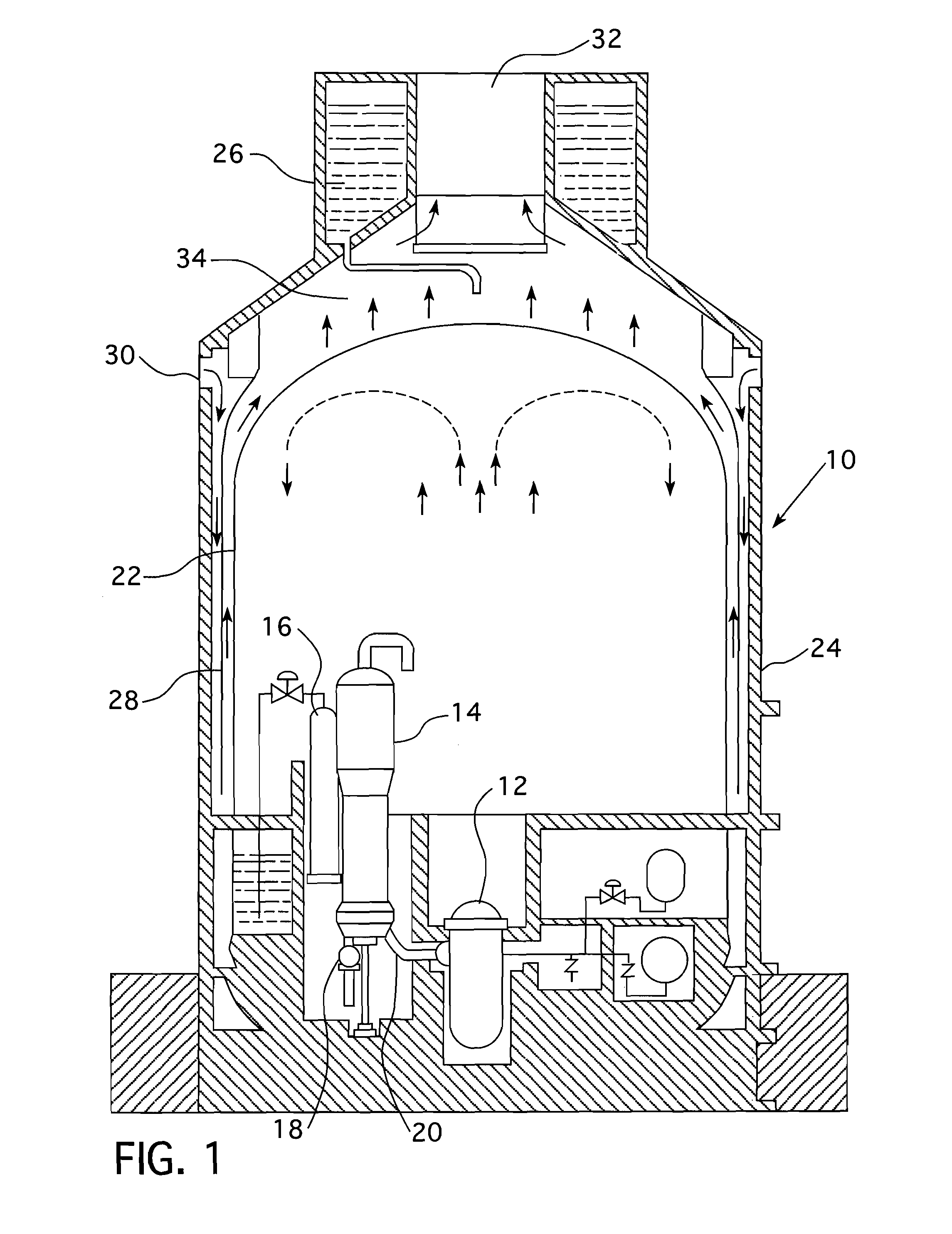Passive containment air cooling for nuclear power plants
a technology of containment air and nuclear power plant, which is applied in nuclear engineering, nuclear elements, greenhouse gas reduction, etc., can solve the problems of reducing the driving force for the leakage of fission products from the containment to the atmosphere, and significant increase in containment pressure and temperatur
- Summary
- Abstract
- Description
- Claims
- Application Information
AI Technical Summary
Benefits of technology
Problems solved by technology
Method used
Image
Examples
Embodiment Construction
[0027]As previously mentioned, in an AP1000 passive cooling containment system, the convective heat transfer to the air by the heated containment steel surface only accounts for a small portion of the total heat transfer; such total heat transfer being primarily accomplished by the evaporation of water from the wetted areas of the containment steel surface, which cools the water on the surface, which then cools the containment steel, which then cools the inside containment atmosphere and condenses steam. This invention enables air cooling alone to provide sufficient heat removal to maintain acceptably low containment pressure with no reliance on active components, operator actions, or auxiliary water supplies, after the initial three days when the initial water volume in the passive containment cooling water storage tank 26 has been exhausted.
[0028]The foregoing object is achieved by creating a tortuous air path in or on at least a substantial part of the exterior surface of the ste...
PUM
 Login to View More
Login to View More Abstract
Description
Claims
Application Information
 Login to View More
Login to View More - R&D
- Intellectual Property
- Life Sciences
- Materials
- Tech Scout
- Unparalleled Data Quality
- Higher Quality Content
- 60% Fewer Hallucinations
Browse by: Latest US Patents, China's latest patents, Technical Efficacy Thesaurus, Application Domain, Technology Topic, Popular Technical Reports.
© 2025 PatSnap. All rights reserved.Legal|Privacy policy|Modern Slavery Act Transparency Statement|Sitemap|About US| Contact US: help@patsnap.com



